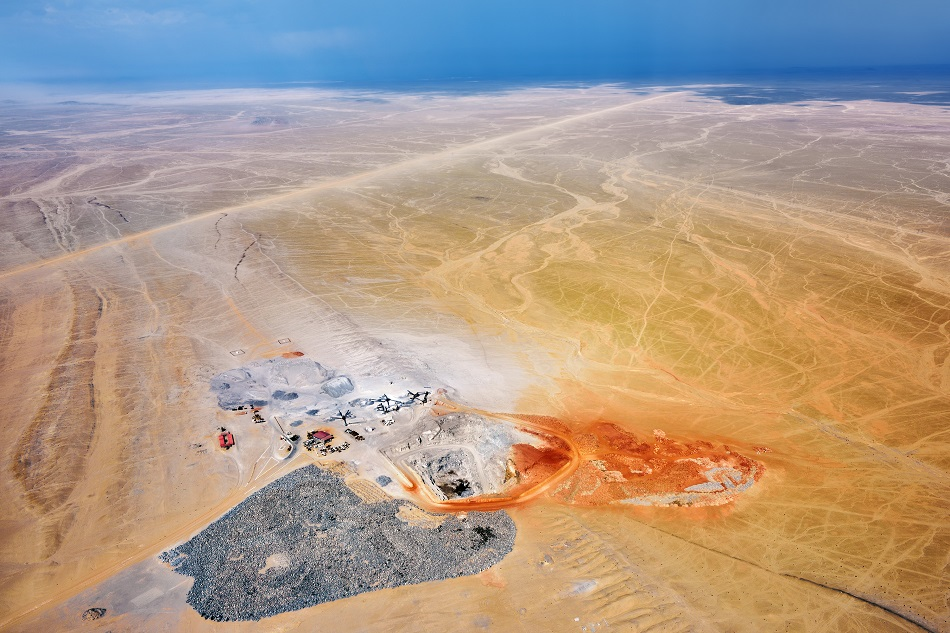
Image Credit: Oleg Znamenskiy/Shutterstock.com
Namibia is located in the south of the African continent bordering the South Atlantic Ocean between the countries of South Africa and Angola. It has a total area of 824,292 km and a population of around 2.5 million. The country experiences hot and dry desert-like conditions with limited and erratic rainfall. Namibia’s economy heavily relies on its mining industry and its mineral resources include diamond, silver, tungsten, lead, zinc, tin, uranium, and copper. Nearly 25% of the country’s income is contributed by this sector.
Overview of Natural Resources
Natural resources such as diamond, uranium, and fluorspar have been instrumental in Namibia’s economic growth. High-quality diamond deposits make Namibia the top destination for gem-quality diamond mining. Namibia produces approximately 2% of gem-quality diamonds globally. Namibia is also the fourth-largest producer of uranium globally accounting for 8% of the world’s production. Other industrial minerals and metals produced in the country include granite, marble, salt, sodalite, dolomite, semiprecious stones, wollastonite and sulfur, zinc, gold, arsenic, lead, manganese, and, silver.
Industrial Minerals and Gemstones
Namibia’s diamond production has been increasing steadily. Diamond is chiefly mined by NAMDEB and by De Beers Marine Namibia (DMN). The Namibian government is working towards forming a substantial domestic market for diamond cutting and polishing operations. Solvay Fluor GmbH of Germany has 100% ownership of the country’s Okorusu fluorspar mine, which accounts for a substantial fraction of pure acid grade fluorspar production. The gemstone mining sector is very popular in Namibia as it is where a large number of gemstones such as amethyst, aquamarine, tourmaline, topaz, and, garnet are found. Platinum-group elements (PGEs) are currently being explored in the northern and southern parts of Namibia.
Metals
Namibia’s gold production as of 2016 stands at 6410 kg. It has increased almost three times since 2009 when the production was 2,057 kg. The Navachab gold mine, the oldest open-pit gold mine in Namibia, produces a major portion of this gold. This huge increase in gold production was also due to the commissioning and the ramp-up of production at the Otjikoto mine.
As of 2015, the production of Copper stood at 10,659 tonnes which is a significant increase over the last year (103%). The major contributing mines were Matchless and the Otjihase. These mines are operated by Weatherly International plc. Other players in the copper mining sector include Sabre Resources Ltd., Takoradi Ltd. of Australia, and INV Metals Inc. of Canada. Not all metals have sustained an increase in production. Some of the metals that have shown a recent decline in production are zinc, silver, and manganese.
Fossil Fuels
Offshore oil and gas exploration operations in Namibia include Blocks 2813A, 2814B, and 2914A run by HRT Particiáções em Petróleo S.A. of Brazil via its subsidiary HRT Oil and Gas Exploração e Produção de Petroleo Ltd. The Kudu gas field operated by state-owned National Petroleum Corporation of Namibia and OAO Gazprom of Russia is another well-known offshore oil and gas exploration field.
Uranium is one of the most exported commodities of Namibia. Uranium deposits are situated at the Rössing mine near the Swakopmund coastline. Globally, uranium demand has increased in an attempt to use more nuclear energy to decrease carbon emissions and protect the environment.
Investment
Namibia’s mining industry is the backbone of the country’s economy and accounts for over half of its annual export earnings. The government of Namibia, with its free-market policy, is keen on promoting the mining industry as a private sector. The government’s initiatives to strengthen its mining sector include:
- A Minerals Policy that lays down clear guidelines for environment and economy friendly mining to stimulate and sustain economic growth
- Reviews of mining-related legislation and the formulation policies that aid in promoting Namibia as an ideal investment destination
Some of the challenges facing the Namibian mining sector are as follows:
- Abandoned mines affecting the tourism industry
- High costs of rehabilitating abandoned mines
- Water scarcity
- Lack of skilled labor
The Chamber of Mines of Namibia has 117 members to date and showcases the interests of its member companies. Experts feel that more incentives for investors are needed to stay competitive among other mineral rich countries to retain investors and attract more foreign investments in the future.
Sources and Further Reading
This article was updated on 3rd February, 2020.
Disclaimer: The views expressed here are those of the author expressed in their private capacity and do not necessarily represent the views of AZoM.com Limited T/A AZoNetwork the owner and operator of this website. This disclaimer forms part of the Terms and conditions of use of this website.